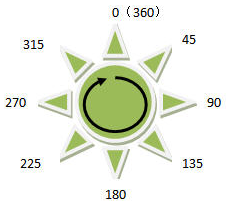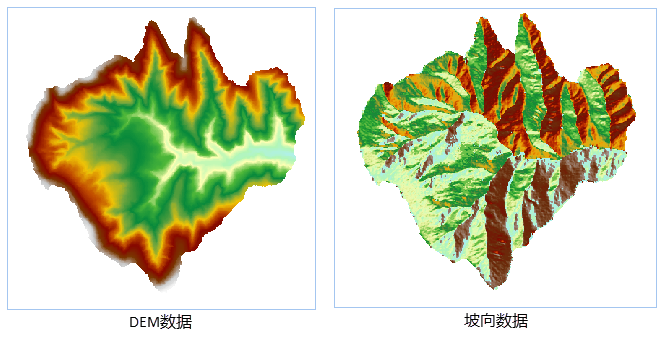Instructions
Slope aspect calculation is used to calculate the orientation of the slope surface of each pixel in DEM data. The range of slope direction calculation is 0 to 360 °, starting from 0 ° due north, moving clockwise, and ending at 360 ° due north. A flat slope has no direction and is assigned a value of -1. The returned result type is RasterRDD.
Analysis principle
The slope direction at a certain point on the ground surface represents the direction of the slope passing through that point. In terrain analysis, aspect represents the angle between the projection of the normal of a tangent plane passing through a certain point on the surface on the horizontal plane and the true north direction passing through that point. The slope direction represents the maximum direction of change in the elevation value of the point. The slope direction is expressed in degrees, and the range of slope analysis results is 0 to 360 °. Starting at 0 ° due north, move clockwise and end at 360 ° due north. The value of each pixel in the slope map represents the direction of the slope face of its pixel face. Flat slopes have no direction and are assigned a value of -1.

Due to the fact that the aspect is a measure of a circle, the 10 ° aspect is closer to 360 ° than the 30 ° aspect. Therefore, before using slope direction for data analysis, users need to convert the slope direction into four basic directions: east, west, south, and north (or eight basic directions: east, west, south, north, southeast, southwest, northeast, and northwest). The conversion can be completed through the grid re grading function, highlighting the range of slope directions that need to be considered.

Application Scenario
Slope orientation is of great significance in fields such as vegetation analysis and environmental evaluation.
- In biology, there is generally a significant difference between vegetation growing on slopes facing north and slopes facing south. The main reason for this difference is that green vegetation requires different levels of sunlight for growth;
- When establishing the site selection of wind power stations, it is necessary to consider building them on slopes facing the wind;
- Geologists often need to understand the main slope directions of faults or fold outcrops to analyze the process of geological changes;
- When determining the location of residential areas that are easily damaged by snowmelt, it is necessary to identify the southfacing slope to obtain the location of the initial melting snow.
Parameter Specification
| Parameter Name | Default Value | Parameter Definition | Parameter Type |
|---|---|---|---|
| RDD to be analyzed | DEM RasterRDD to be analyzed | RasterRDD |



